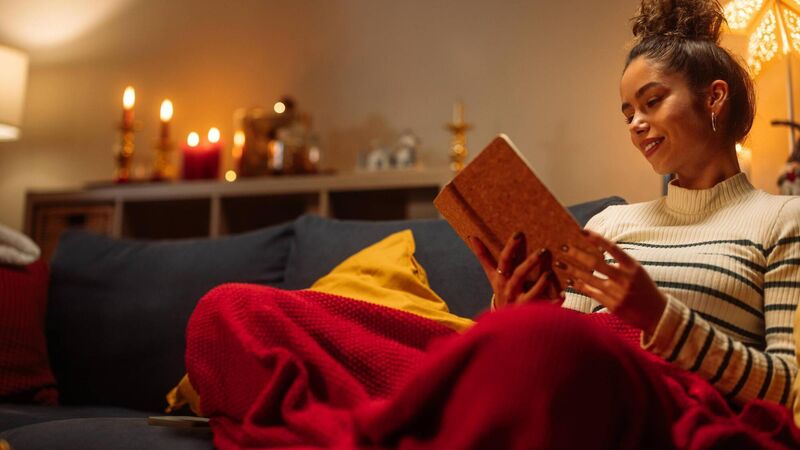Life Hack: How little dopamine boosts can get you through the winter nights

Life Hack: A low dopamine evening trend is seen as a way to escape the overstimulation of screens and daylight-simulating bulbs, and instead create a gentle, glowing environment that promotes calm. From reading by lamplight to pottering around the kitchen by candle glow, it’s all about small, sensory moments that let your mind rest
It’s been over a week since the clocks changes for winter, giving us shorter days and longer dark nights.
I’ve always loved the darker months, any excuse to embrace a cosy night in and essentially hibernate. That’s why my interest was so piqued when I heard about a new trend in social media called ‘low dopamine evenings’.
‘Cosy season’ is an online concept I’m familiar with — think warm blankets, the soft glow of a scented candle, and hands warming around a mug of tea — and I’m not alone there: #cosyseason has over 4.4K posts on TikTok and more than 36 million views.
However, a new trend is emerging along the same lines and it sounds right up my street.
The rise of the ‘low dopamine evenings’ to relax and unwind seems like the perfect antidote to hectic days and overstimulating experiences that make our minds hectic.
It encourages people to slow down, dim the lights, and create spaces that soothe rather than stimulate ‘Low dopamine evenings’ offer opposite advice to common design choices.
Lighting experts at Pooky say it avoids trying to make our rooms appear bigger and brighter, instead using lighting to make your space feel smaller, softer, and cosier, ideal for the cold months ahead.
Dopamine is your brain’s feel-good chemical that gives you a short term mood boost when you take part in stimulating activities.
This includes scrolling on your phone to watching bright screens. However, too much stimulation can leave you feeling restless, anxious, or struggling to wind down at night, particularly in the darker months of the year.
A low dopamine evening trend is seen as a way to escape the overstimulation of screens and daylight-simulating bulbs, and instead create a gentle, glowing environment that promotes calm.
From reading by lamplight to pottering around the kitchen by candle glow, it’s all about small, sensory moments that let your mind rest.
The idea of a low-dopamine evening has gained popularity among wellness and interior creators alike, who see the benefits of reducing overstimulation.
The trend focuses on gentle, grounding activities that prepare the mind for rest, like reading, journaling, or simply relaxing under the glow of a lamp.
One example comes from TikTok creator @momentsabloom, whose low dopamine evening routine video has been viewed nearly 600,000 times.
It sees her preparing her home for a quiet night: switching on soft lamps, lighting candles, and winding down with low-energy rituals.
Viewers flocked to the comments praising the trend, with one saying, “Slowing down and this lifestyle is the new luxury in life”.
If you want to indulge in a low dopamine evening, the experts at Pooky have shared three lighting tips to create the perfect space.
Minimise your space with low lamps: Instead of aiming for brightness or openness, focus on intimacy.
Use low-level lamps to create small pools of light that draw you in.
This helps “shrink” the feel of your room, making it more inviting and relaxing - no renovation required.
Use warm lighting: Cold white bulbs mimic daylight, which can be energising, but not ideal when you’re winding down.
Swap them for warm, yellow-toned bulbs or amber shades that emulate the glow of a sunset.
This gentle light supports your natural sleep rhythm and encourages relaxation before bed.
Embrace dark corners: Don’t feel the need to illuminate every corner. Allowing dark patches around your room helps reduce visual stimulation and tells your brain it’s time to rest.
Focus your lighting only where you are, such as a soft glow by the sofa, or a single lamp beside your reading chair.







